Running a wine tasting may sound daunting, but there are real benefits for those ready to slurp and spit, reports Graham Holter
You won't know until you've tried' is advice that is given to every child in the land, and it holds true for wine drinkers, too. The UK market offers more diversity than just about any other country in the world, and yet many consumers find it all rather bewildering and stick to the same tried and trusted brands.
Research from Wine Intelligence, carried out last September, found that more people than ever fall into this category 30% of regular wine drinkers, in fact, up from 26% in September 2007. Over the period, the proportion claiming to try new wines on a regular basis fell from 52% to 41%. As for the rest, they don't really mind what they buy as long as the price is right.
Clare Griffiths, vice-president of European marketing for Constellation Wines, says: "Currently, 44.4% of wine sold in the convenience sector is between £5 and £7, double the amount of that sold in the entire off-trade at the same price. With consumers tending to pay more in convenience stores, be sure to include wines of a higher price point in a wine tasting, as this will encourage the consumer who may usually only spend £4 on a bottle of wine to taste the big step up in quality of a wine of £5 to £7, or even £7 to £10."
Nisa member Fisher's in Gerrards Cross, Buckinghamshire, runs a monthly wine tasting event in the shop. "We've done five or six so it's still early days, but we're up to capacity we have 30 people each month," says owner Paul Fisher.
Food matching is an essential element of the after-hours events, which are co-ordinated by the store's own wine expert, Elly Munro, and typically feature six wines. Paul says: "We do canapés that go with each wine. We start with a glass of sparkling wine and a canapé that goes with that. People try the wine, then the canapé, and find that their opinion of the wine changes with the food."
Local producers supply some ingredients required for the canapés, which are prepared by the store's deli staff. The wines are selected to complement the food, which Fisher believes is the most logical way of approaching a tasting.
Wines are supplied by companies such as Bibendum and Chalié Richards, as well as a local importer of Italian wines. "They supply one bottle for free so if we open two, which we inevitably do, we pay for the second," explains Paul.
"We charge £10 to attend the tasting, which does just about cover the costs, but we sell £500-worth of wine. It's quite an investment, but we think it's a good long-term sustainable project."
Fisher is hopeful of attracting winemakers to attend future events to talk about their own products.
In a recent tasting, four of the wines were under £8 a bottle; one was £12, and another at £25. "It's not so exclusive, but we're trying to get people to trade up. A £7 bottle is so much better than a £5 bottle.
"We've decided to stay away from branded wines as much as possible. We've got a huge Tesco down the road and they're nailing us on these," Paul admits.
Tastings don't have to be as sophisticated as this. Nor do they have to be all-ticket affairs: offering a small selection for free, during trading hours, can be effective unless there are issues with local street drinkers.
Griffiths at Constellation says: "Tastings can become a social event and underline the unique community links that independent retailers have with their customers and neighbourhood. Sometimes even asking for a nominal donation, at the customer's discretion, can be a good way of limiting abuse of the offer of free wine, but also a great way of raising funds for local charities."
"Think long and hard about how many wines and at what price. It might be worth just trying one white and one red for the first tasting and working up from that. A good rule is to go for three white, rosé and red, and have a less expensive, a middle of the road and a more quality wine for each, which is nine different wines.
"Don't be over-ambitious nine bottles of wine to organise is more than enough. It also depends on how serious they want it to be. They might want to offer customers the chance just to taste and not drink the rest of the glass so spit out the rest, then a spittoon will be needed, and they might want to provide some paper to make notes."
Suppliers can often help organise tastings and can usually offer some free products and advice. Fran Draper, brand manager of Chalié Richards, says: "In-store tastings are a great strategic tool for retailers, which can help to increase both loyalty and sales.
"Chalié Richards offers tailormade support packages for customers, depending on the level of business and range stocked by the customer. This support can range from help with tasting notes, pos and free stock, to attendance at key events by one of our trained wine representatives.
"The most successful wine tastings tend to have a theme. This could be based on a country, or a comparison of the same grape variety from different countries, or on something like cool climate regions, or aromatics varietals. A discount on sales made during the evening always helps to drive purchases on the night."
Will wine tastings boost sales at your store? You won't know until you've tried.
You won't know until you've tried' is advice that is given to every child in the land, and it holds true for wine drinkers, too. The UK market offers more diversity than just about any other country in the world, and yet many consumers find it all rather bewildering and stick to the same tried and trusted brands.
Research from Wine Intelligence, carried out last September, found that more people than ever fall into this category 30% of regular wine drinkers, in fact, up from 26% in September 2007. Over the period, the proportion claiming to try new wines on a regular basis fell from 52% to 41%. As for the rest, they don't really mind what they buy as long as the price is right.
Tips for a successful wine tasting
Bestway's James Hall says: "The things to organise are a table or surface to prepare the bottles and the glasses order some small plastic glasses for sampling and arrange for a few plates of plain biscuits and some plain water to be around so that customers can clean their palate after tasting each wine."
He adds: "Sparkling and white wines should be refrigerated, but not for too long. Allow refrigerated wines a little time out of the fridge to warm aim to serve them at about 10-14°C. Reds should be stored in a cool cellar, ideally, and served just below room temperature aim for 18°C."
Check your premises licence to ensure you're allowed to offer wine samples. If this isn't explicitly covered, you need to apply for a Temporary Event Notice (fee £21) from your licensing authority.
Consumers get stuck in a rut simply because there's no incentive to experiment, to trade up, or to leave their comfort zones. But an in-store tasting can address these issues, and they're easier to organise than many retailers believe. The result is often more confident customers who see the benefits of spending a little more.Bestway's James Hall says: "The things to organise are a table or surface to prepare the bottles and the glasses order some small plastic glasses for sampling and arrange for a few plates of plain biscuits and some plain water to be around so that customers can clean their palate after tasting each wine."
He adds: "Sparkling and white wines should be refrigerated, but not for too long. Allow refrigerated wines a little time out of the fridge to warm aim to serve them at about 10-14°C. Reds should be stored in a cool cellar, ideally, and served just below room temperature aim for 18°C."
Check your premises licence to ensure you're allowed to offer wine samples. If this isn't explicitly covered, you need to apply for a Temporary Event Notice (fee £21) from your licensing authority.
Clare Griffiths, vice-president of European marketing for Constellation Wines, says: "Currently, 44.4% of wine sold in the convenience sector is between £5 and £7, double the amount of that sold in the entire off-trade at the same price. With consumers tending to pay more in convenience stores, be sure to include wines of a higher price point in a wine tasting, as this will encourage the consumer who may usually only spend £4 on a bottle of wine to taste the big step up in quality of a wine of £5 to £7, or even £7 to £10."
Nisa member Fisher's in Gerrards Cross, Buckinghamshire, runs a monthly wine tasting event in the shop. "We've done five or six so it's still early days, but we're up to capacity we have 30 people each month," says owner Paul Fisher.
Food matching is an essential element of the after-hours events, which are co-ordinated by the store's own wine expert, Elly Munro, and typically feature six wines. Paul says: "We do canapés that go with each wine. We start with a glass of sparkling wine and a canapé that goes with that. People try the wine, then the canapé, and find that their opinion of the wine changes with the food."
Local producers supply some ingredients required for the canapés, which are prepared by the store's deli staff. The wines are selected to complement the food, which Fisher believes is the most logical way of approaching a tasting.
Wines are supplied by companies such as Bibendum and Chalié Richards, as well as a local importer of Italian wines. "They supply one bottle for free so if we open two, which we inevitably do, we pay for the second," explains Paul.
"We charge £10 to attend the tasting, which does just about cover the costs, but we sell £500-worth of wine. It's quite an investment, but we think it's a good long-term sustainable project."
Fisher is hopeful of attracting winemakers to attend future events to talk about their own products.
In a recent tasting, four of the wines were under £8 a bottle; one was £12, and another at £25. "It's not so exclusive, but we're trying to get people to trade up. A £7 bottle is so much better than a £5 bottle.
"We've decided to stay away from branded wines as much as possible. We've got a huge Tesco down the road and they're nailing us on these," Paul admits.
Tastings don't have to be as sophisticated as this. Nor do they have to be all-ticket affairs: offering a small selection for free, during trading hours, can be effective unless there are issues with local street drinkers.
Griffiths at Constellation says: "Tastings can become a social event and underline the unique community links that independent retailers have with their customers and neighbourhood. Sometimes even asking for a nominal donation, at the customer's discretion, can be a good way of limiting abuse of the offer of free wine, but also a great way of raising funds for local charities."
Tasting types
Comparative tasting. This is a tasting in which people try three or more examples of a particular grape or style (for example, tasting three bottles of Cabernet Sauvignon, one from California, one from Australia and one from Bordeaux).
Tasting by varieties. This is a mix of grape varieties, vintages and styles, starting with the whites and ending with the reds, going from the least powerful grape to the more perfumed and full bodied, and from the youngest to the oldest vintage.
Sensible planning is key to a successful event. James Hall, controller of Bestway's Best-one symbol group, says: "The first thing to decide is the wines to be offered and what type of deals can customers expect if they buy a case or six bottles. Once the wines have been selected it's all down to making sure that the promotion of the event is done well. Comparative tasting. This is a tasting in which people try three or more examples of a particular grape or style (for example, tasting three bottles of Cabernet Sauvignon, one from California, one from Australia and one from Bordeaux).
Tasting by varieties. This is a mix of grape varieties, vintages and styles, starting with the whites and ending with the reds, going from the least powerful grape to the more perfumed and full bodied, and from the youngest to the oldest vintage.
"Think long and hard about how many wines and at what price. It might be worth just trying one white and one red for the first tasting and working up from that. A good rule is to go for three white, rosé and red, and have a less expensive, a middle of the road and a more quality wine for each, which is nine different wines.
"Don't be over-ambitious nine bottles of wine to organise is more than enough. It also depends on how serious they want it to be. They might want to offer customers the chance just to taste and not drink the rest of the glass so spit out the rest, then a spittoon will be needed, and they might want to provide some paper to make notes."
Suppliers can often help organise tastings and can usually offer some free products and advice. Fran Draper, brand manager of Chalié Richards, says: "In-store tastings are a great strategic tool for retailers, which can help to increase both loyalty and sales.
"Chalié Richards offers tailormade support packages for customers, depending on the level of business and range stocked by the customer. This support can range from help with tasting notes, pos and free stock, to attendance at key events by one of our trained wine representatives.
"The most successful wine tastings tend to have a theme. This could be based on a country, or a comparison of the same grape variety from different countries, or on something like cool climate regions, or aromatics varietals. A discount on sales made during the evening always helps to drive purchases on the night."
Will wine tastings boost sales at your store? You won't know until you've tried.





















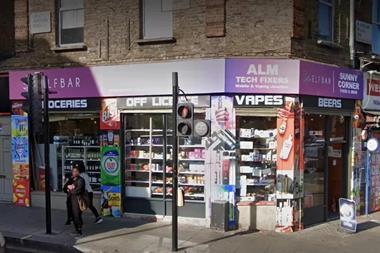
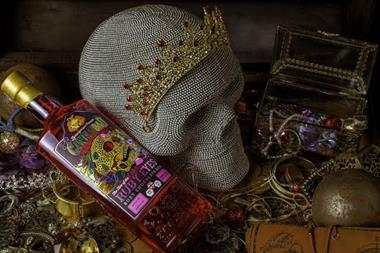

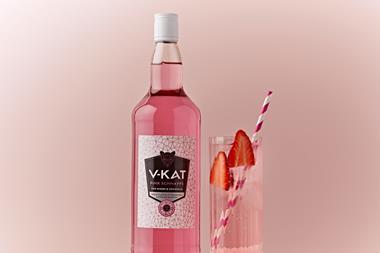
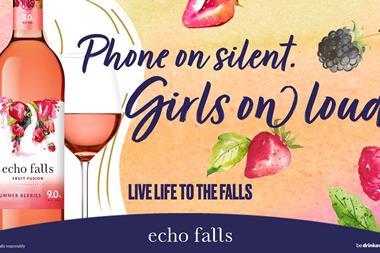
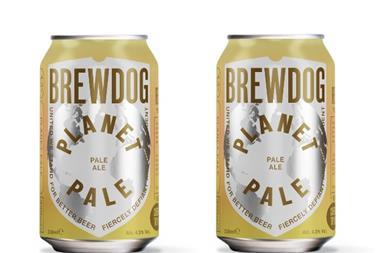

No comments yet